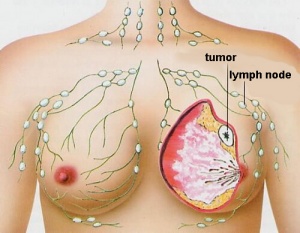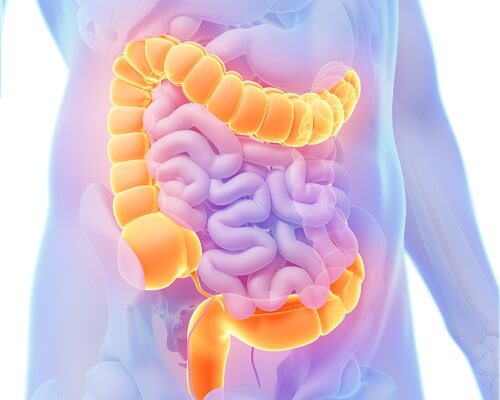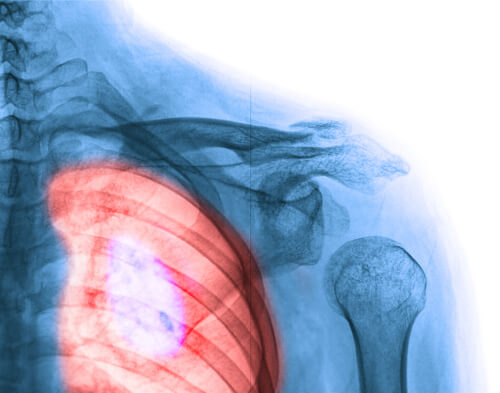Cancer in Women: The 5 Most Common Types

Knowing the most common types of cancer in women is important. However, we don’t mean to scare you. Our intent is to simply inform and make you aware of the fact that prevention is vital. Healthy living and periodic reviews, as well as staying away from nasty habits like tobacco, will prevent many of these diseases.
Cancer doesn’t always have to mean death. It is a treatable disease but one that requires effort, courage and social support. Equally important is to have the strength to face it.
There are millions of women who beat cancer every year, so it’s worth making the effort to prevent it. Dedicate the next three minutes of your time to this quick read in order to be aware of the most common types of cancer in women.
The 5 Most Common Types of Cancer in Women
1. Breast Cancer

You probably know someone in your social circle who has breast cancer, or perhaps you’ve even lost a loved one to this terrible disease. But as science advances every day, more and more women are surviving. Breast self-exams and mammograms are key factors in early detection.
Here are a few signs and symptoms to keep in mind:
- A bump or nodule on the breast, nipple or armpit that wasn’t there previously.
- Pain in the breast when applying pressure.
- Change in breast size.
- Skin irregularities: change in color, ulcers, orange peel-like texture.
- Less mobility on one side when raising the arms.
- Nipple appearing sunken.
2. Colon Cancer

What is the origin? What causes it? There are no conclusive answers to these questions.
Despite this, it is known for a fact that almost all colon cancers start with non-cancerous polyps. If they are not detected and removed early enough, they may become cancerous. It’s a risk, so it’s very important to be aware of the following symptoms:
- Blood in the stool.
- Abdominal pain.
- General discomfort, slow digestion and fatigue.
- Unexplained weight loss.
- Frequent bouts of diarrhea and constipation. Abnormal, thin stools.
See also: Tips to Face the News About Cancer
3. Gynecologic Cancers

Now, let’s look at some of the most frequently reported symptoms:
- Irregular periods. This should be the first cause for alarm. Heavy bleeding during menstruation should be immediately reported to your doctor. Therefore, watch out for heavy or irregular periods.
- Unexplained weight loss.
- Pelvic pain. This symptom can be a sign of possible ovarian cancer, so don’t ignore any discomfort in the pelvis or abdomen, including bloating or cramps.
- Change in vaginal secretions. If they are darker in color or have a strong odor, they may be signaling an infection.
- Constant tiredness. With no apparent cause, you start your day feeling fatigued and get home at night with almost no strength left.
4. Lung Cancer

It’s one of the most frequent types of cancer in women. However, in the last few years, the incidence has become worrisome because it has one of the highest mortality rates in both men and women.
Eighty percent of all cases have their origins in tobacco. Smoking or even being in places or situations where you’re exposed to smoke has serious consequences on your health. It’s definitely something to be avoided, as well as other bad habits that lead to many diseases.
The number of female smokers has risen considerably. Either something is missing from advertising campaigns or the message just isn’t getting through. Quit for your own health and peace of mind! Watch out for the following symptoms:
- A persistent cough.
- Chest pain when coughing.
- Whistling in the chest when breathing.
- Fatigue.
- Weight loss.
- Coughing up blood.
- Feeling like you can’t get enough air.
- Snoring at night.
Read also: The WHO’s Finding on Meat and Cancer
5. Skin Cancer

How do we identify a dangerous mole? Use the ABCDE rule:
- A is for asymmetry: a benign mole is always symmetrical.
- B is for border: the edges should appear normal. If you see imperfections, then see your dermatologist.
- C is for color: watch out for any brown, red, black or blue spots on the mole.
- D is for diameter: if your mole measures more than 6 mm in size, then see a doctor.
- E is for evolution: if you notice the mole has changed, then see a doctor.
Will you remember the rule?
All cited sources were thoroughly reviewed by our team to ensure their quality, reliability, currency, and validity. The bibliography of this article was considered reliable and of academic or scientific accuracy.
- Siegel, R. L., Miller, K. D., & Jemal, A. (2017). Cancer Statistics, 2017. CA: A Cancer Journal for Clinicians. https://doi.org/10.3322/caac.21387
- UK, C. R. (2013). Cancer Incidence for Common Cancers. https://doi.org/10.1017/S0020860400079146
This text is provided for informational purposes only and does not replace consultation with a professional. If in doubt, consult your specialist.








